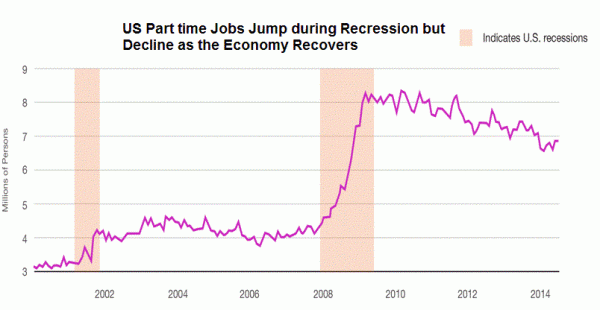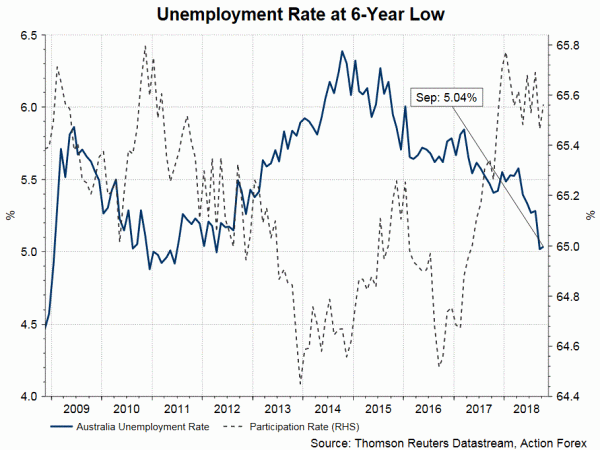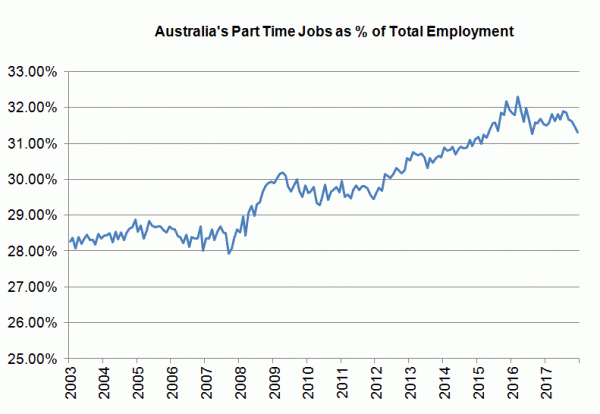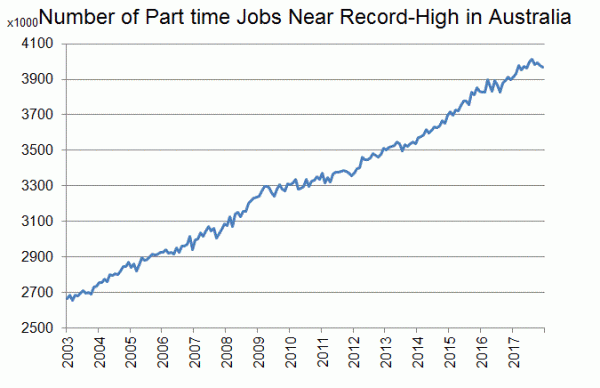RBA has sounded confident in the domestic growth outlook in both. On the job market, the members acknowledged the decline in unemployment rate and indicated the “notable” fall in youth unemployment. The central bank forecast that employment growth would be slightly above average in the period ahead, facilitated by the record high number of job vacancies. Yet, the members also noted that wage growth has been sluggish. They expected the effects of the “recent increase in the minimum wage” should boost wage in the quarter.
While policymakers appeared content with the decline in unemployment rate and remained positive over the outlook of wage growth. We believe they have ignored the underlying structure of the job market, which might be the cause of sluggish wage growth.
The chart below shows that part-time jobs as a percentage of total employment. It jumped sharply from mid-2008 to early 2010, as the country’s economy has been fragile for some years since the financial crisis in 2008. The percentage has waxed and waned, but is in an overall uptrend. While this is normal for the proportion of part time work to increase during economic downturn, it does not appear healthy if the trend persists years after the downturn. The underemployment rate of Australia has been hovering around 8.5% since 2004, compared with 2009’s high of 7.6%.
 Concerning the structure of job market in Australia, RBA’s response last year was that the rise of part time jobs was “driven by changing labor market regulations, technological change and a shift towards a more service based economy”. It added that “the distinction between full-time and part-time work has become less important in assessing labor market conditions”. Moreover, the “growth in part-time work came as businesses use increased labor market flexibility by adjusting the hours worked by employees rather than the number of employees.
Concerning the structure of job market in Australia, RBA’s response last year was that the rise of part time jobs was “driven by changing labor market regulations, technological change and a shift towards a more service based economy”. It added that “the distinction between full-time and part-time work has become less important in assessing labor market conditions”. Moreover, the “growth in part-time work came as businesses use increased labor market flexibility by adjusting the hours worked by employees rather than the number of employees.
Although Australia’s unemployment rate has been on the fall, while the number of people returning to the labor force has been rising, part-time jobs as a percentage of total employment has continued to increase since 2008 global financial crisis. This is not consistent with other advanced economies. We believe this could be a factor leading to sluggish wage growth against the backdrop of strong headline employment data.















